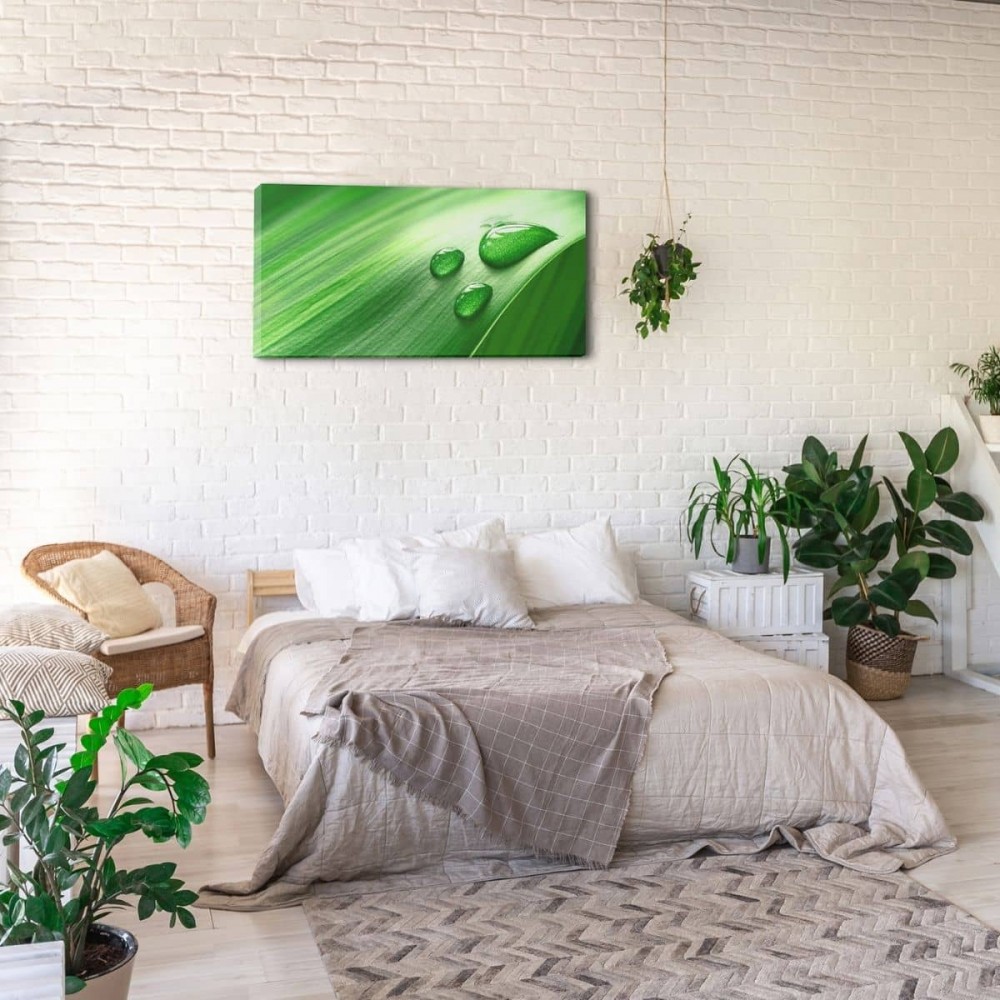Welcome, art enthusiasts and connoisseurs alike, to a world where colors burst to life, stories unfold, and emotions are immortalized on our very walls. Wall art, in its myriad forms, has the incredible power to transform a mere space into a captivating haven of artistic expression. Whether it's a vibrant glass painting shimmering with ethereal hues, a canvas print breathing life into a photograph, or an oil painting boasting rich textures and timeless elegance, each piece holds a unique charm that deserves to be cherished.
However, as time passes, these treasured artworks can fall victim to the relentless march of dust, dirt, and other environmental foes, gradually losing their luster and allure. Fear not, dear readers, for in this article, we embark on a journey through the realm of wall art cleaning, uncovering the secrets to reviving and preserving the mesmerizing beauty of our beloved creations.
How to clean oil paintings?
Oil wall art with rich textures and evocative brushstrokes have a magnetic appeal that transcends time. However, their maintenance can be an art in itself.
Cleaning oil paintings requires a gentle touch and meticulous attention to detail to maintain their timeless elegance. Before attempting any cleaning methods, you should assess the condition of the painting and determine if it needs professional restoration. If the painting is in a stable condition, there are several home remedies that can effectively remove dirt from the surface and bring its beauty to life.

A simple but effective method is to use a soft, clean brush to gently remove dust and loose dirt from the surface of the image. Gently sweep the brush in a downward motion, being careful not to apply excessive pressure that could damage the delicate layers of paint.
For more stubborn dirt, you can prepare a mild cleaning solution by mixing a few drops of mild soap with water. Dip a soft, lint-free cloth or sponge into the solution so that it is slightly damp, not wet. Before proceeding, test the solution on an inconspicuous part of the image to make sure it does not cause any adverse reactions.
Using gentle circular motions, starting at the top of the image and working your way down, gently wipe the affected areas with a damp cloth or sponge. Avoid rubbing or scrubbing vigorously as this may remove the paint or damage the delicate paintwork.
It is very important that the painting dries in a well-ventilated place, away from direct sunlight or heat sources. This will prevent potential damage from drying out quickly or from exposure to extreme temperatures.
How to clean acrylic paintings
First of all, start by removing any loose dust or debris from the image surface. Gently use a soft-bristle brush or a clean, lint-free cloth to gently remove dirt.
If there are stains on an acrylic painting, it's important to remove them quickly. Start by creating a mild cleaning solution using lukewarm water and a few drops of mild dishwashing liquid. Gently mix the solution until well combined.
Then, dampen a soft, lint-free cloth or sponge with the cleaning solution. It is important that the cloth or sponge is only slightly damp, not wet, to prevent excess moisture from getting onto the paint or canvas.

Be careful not to rub or scrub vigorously as this can damage the layers of acrylic paint. After cleaning, rinse the cloth or sponge with clean water and gently wipe the image surface to remove any residual solution. Avoid excessive moisture during this step.
Allow the painting to dry in a well-ventilated area, this will ensure a gradual and even drying process, avoiding potential paint damage.
If home remedies for removing stains on acrylic and oil paintings not help, you can find in art stores specialized oils for cleaning old paintings (e.g. linseed oil). They have the consistency of a light emulsion and you should use them with cotton swabs.
Remember to always be careful when cleaning oil and acrylic paintings. Consult a professional restorer if you are unsure of the condition of the painting or if dirt or stains persist. By caring for these artistic treasures and using gentle home remedies, you can help restore their luster and ensure their longevity for future generations.
Cleaning canvas prints
Cleaning the surface of canvas prints (canvas paintings) also requires a gentle touch to maintain their beauty. Start by removing dust with a soft brush or lint-free cloth. For stains, create a mild cleaning solution with a few drops of mild liquid soap in lukewarm water. Lightly dampen a soft cloth or sponge and gently rub the affected areas in circular motions. Rinse the cloth and wipe off any residue. Wipe the surface with a dry cloth to absorb excess moisture. Allow the print to dry out of direct sunlight or heat sources.

How do you clean glass pictures?
Cleaning the surface of images printed on glass (glass prints) requires careful handling to maintain their clarity and visual impact:
Begin by removing loose dust or debris from the glass surface with a soft cloth. Swipe gently over the surface to avoid scratching the glass.
Prepare a cleaning solution by mixing equal parts distilled water and vinegar or a mild glass cleaner in a spray bottle. Alternatively, you can use a commercially available glass cleaner recommended for delicate surfaces.

Lightly spray the surface of the glass with the cleaning solution.
Gently wipe the glass surface in circular motions. Avoid using excessive pressure or abrasive materials that may scratch the surface.
After cleaning, use a clean, dry cloth to wipe away any remaining moisture from the glass surface. Make sure there are no streaks or residue left.
Remember to avoid the use of strong chemicals, abrasives or excessive moisture, which can damage the canvas image or the surface of the glass paintings. If you are unsure of specific image cleaning requirements, refer to the manufacturer's guidelines or seek advice from a professional in the field.
From the delicate charm of glass paintings to the lively charm of canvas prints and the timeless elegance of oil paintings, each art form requires its own unique approach and care. Remember that these prized works contain not only visual splendour, but also stories, emotions and a touch of the artist's soul. By using the gentle techniques and methods described in this article, we can honor the artistic legacy entrusted to us, ensuring that it remains a source of inspiration and joy for generations to come.







